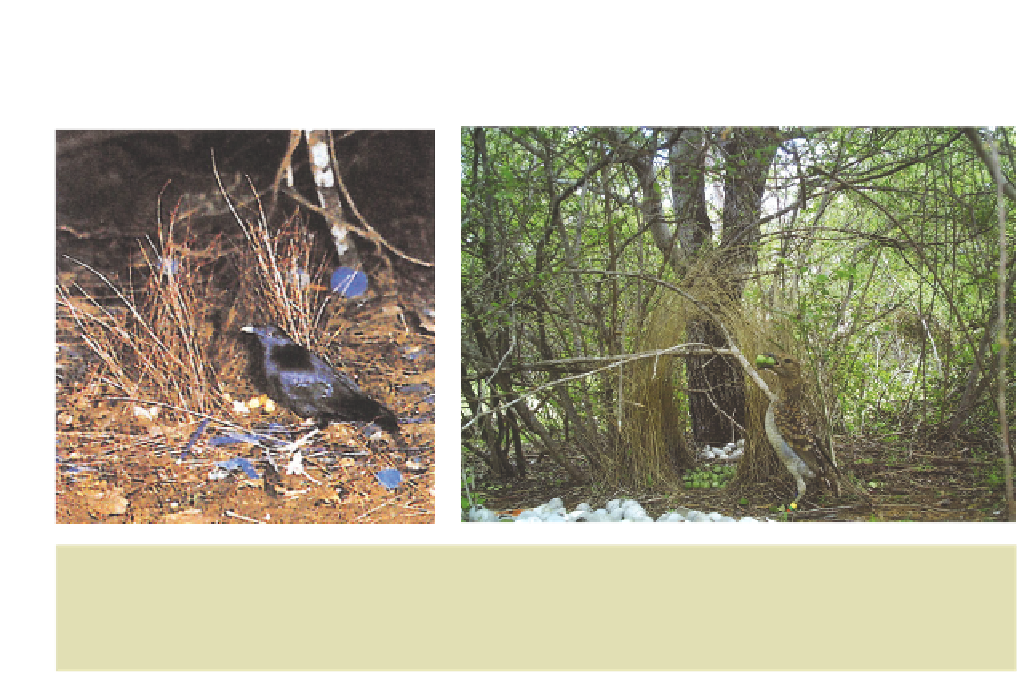Biology Reference
In-Depth Information
(a)
(b)
Fig. 7.9
The bowers of: (a) Satin bowerbird. Photo by Michael & Patricia Fogden/Minden Pictures/FLPA.
(b) Spotted bowerbird. Satin bowerbirds prefer blue objects. This bower has feathers and human debris
including pens, pieces of plastic and toothbrushes. Spotted bowerbirds prefer green objects, especially
Solanum
berries. Photo © Joah Madden.
bowers, males tended to add sufficient berries to restore their previous number of
decorations, and no more. This suggests that males modulate their decorations in
relation to their own social status, so females may be able to assess a male's
competitive ability from his bower.
When females gain only sperm from matings, as in the bowerbirds, could they be
gaining genetic benefits from mate choice? Two hypotheses have been proposed. We
shall discuss each in turn before we consider how we might test them.
Genetic benefits from female choice:
two hypotheses
Fisher's hypothesis: females gain attractive sons
R.A. Fisher (1930) was the first to clearly formulate the idea that elaborate male
displays may be sexually selected simply because it makes males attractive to females.
This may sound circular, and indeed it is, but that is the elegance of Fisher's argument.
At the beginning, he supposed, females preferred a particular male trait (let us take
long tails as an example) because it indicated something about male quality. Perhaps
males with longer tails were better at flying and, therefore, at collecting food or avoiding
predators. An alternative starting point is to suppose that longer tails were simply





























